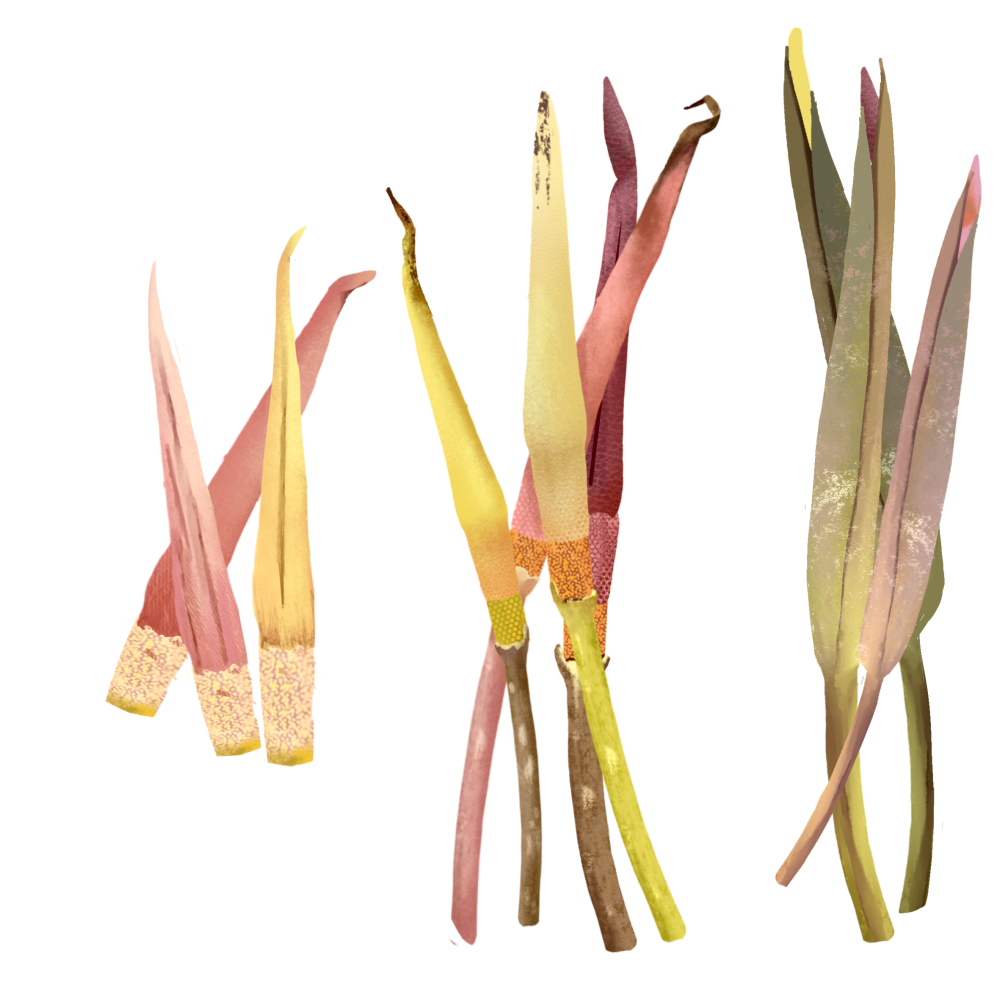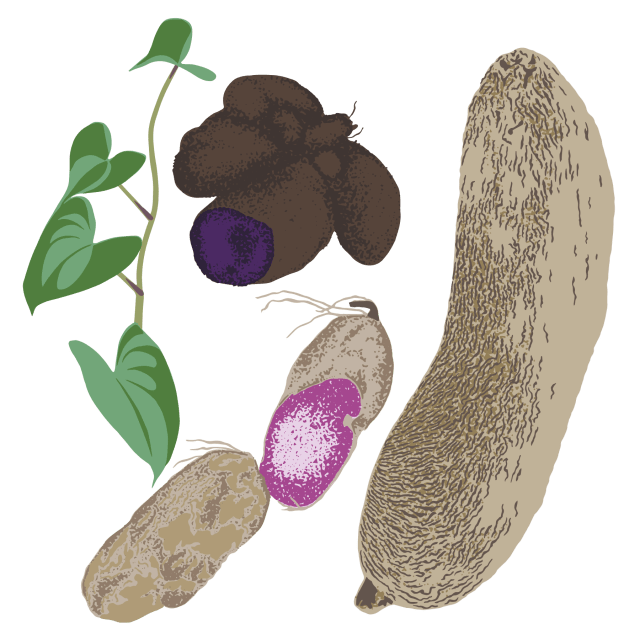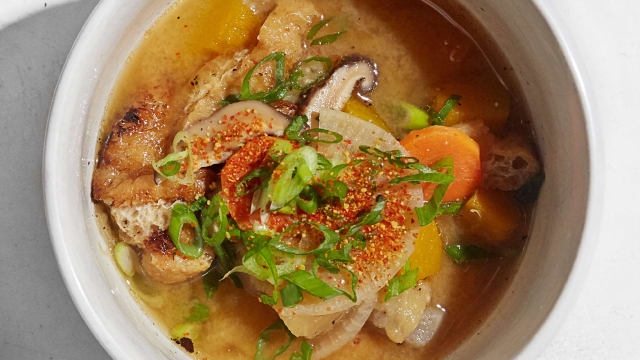Dragon Stalk Yam

Latin name: Amorphophallus commutatus
Other names: shevla, mogari kanda, jungli suran
Uses: vegetable, medicine
While its name evokes a picturesque, mythical beast, dragon stalk yam might more accurately be called dragon breath. As pretty as it is, with thin, hollow stalks and fleshy spikes encased in leafy spathes, the dragon stalk gives off a fetid odor that acts as a beacon for birds and other foragers. The yams sprout with the first rains, and the spathes change from white-green to purple as the yam ripens. Brown would mean it's past its sell-by date. Pick the ones just that are about to mature: they are likely to be the least smelly. Like several other members of the Araceae family, dragon stalk yam needs to be cooked with a souring agent to avoid itching or stinging sensations.
Why is dragon stalk yam healthy?
Dragon stalk yam is rich in iron, potassium, and antioxidants with strong antimicrobial effects. In traditional Indian medicine, it is prescribed to improve immunity and restore a healthy gut microbiome. A paste of the tuber is also applied to soothe and cure scabies.
What does dragon stalk yam taste like?
The stalk emits a warm, musty smell, and the odor intensifies to rotting, as it ripens. Thankfully the smell dims when cooked, revealing an earthy, umami flavor and a petrichor aroma. The texture is slightly chewy but firm, recalling fibrous banana flowers. Uncooked tubers are toxic, causing stitching sensations and itching in your throat.
Where does dragon stalk yam grow?
Dragon stalk yam sprouts up in the tropical forest regions of peninsular India at the onset of monsoon. The tuber stalks thrive on flat-topped hills with scant soil and between laterite rocks. Birds like koels and bulbuls help disperse its fruit. It remains uncultivated and is mainly foraged and sold at local markets. According to the International Union for Conservation of Nature, it is a critically endangered medicinal plant in South India.
How do I prepare dragon stalk yam and what do I pair it with?
This one comes with special instructions! First, never eat it raw. The calcium oxalates in dragon stalk yam can cause itching, so wear gloves when prepping the vegetable. Citric acid helps counteract the oxalates, so rubbing kokum or lemon juice over your hands helps too. Using your hands, peel the sheath off and cut and discard the bottom of the stalk, just above the ribbed, bright yellow band. Slicing the tuber into rounds is the best way to savor its meaty texture. Stir-fry it as a vegetable, cook it with fresh or dried prawns or mincemeat, or use it as a filling for croquettes and tikkis. In and around Mumbai, locals prefer to cook the yam with kakad (Garuga pinnata), a sour gooseberry-like fruit. Tamarind or bondara (Lagerstromia parviflora) leaves also neutralize the oxalates effectively. Aromatic spices help mask its slightly putrid smell, as do curry leaves, fresh coconut, and kokum. Since the yams appear for only a few weeks a year, local communities deep-fry and freeze the tubers to enjoy them for a couple of months.
Surprising fact:
Dragon stalk yam is related to the foul-smelling titan arum or corpse flower, the largest unbranched inflorescence (cluster of tiny flowers) in the world. This monster takes up to 10 years to bloom and can weigh as much as 170 pounds.




